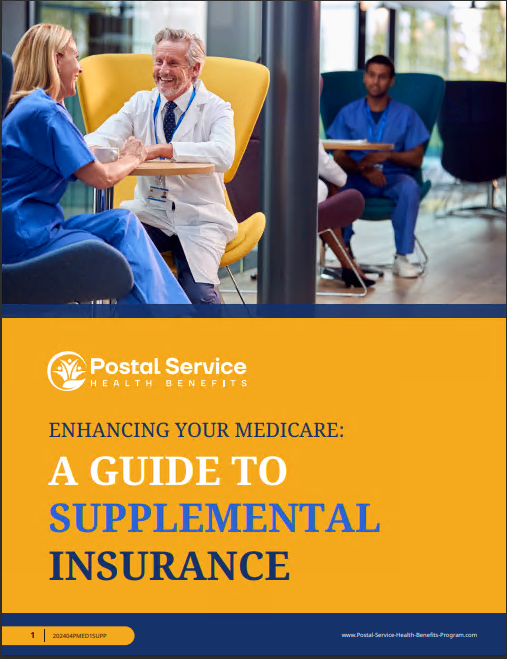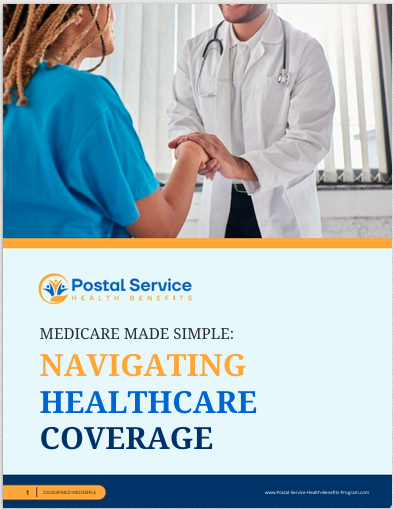Key Takeaways:
-
Transitioning from FEHB to PSHB in 2025 introduces new enrollment rules and benefits specifically tailored to Postal Service employees and annuitants.
-
Understanding the differences in costs, Medicare integration, and plan structures can help you make informed decisions during Open Season or qualifying life events.
Breaking Down FEHB and PSHB Coverage
The Federal Employees Health Benefits (FEHB) program has long been a cornerstone of federal employee healthcare. However, for Postal Service employees and retirees, 2025 brings a significant shift with the introduction of the Postal Service Health Benefits (PSHB) program. While both programs aim to provide comprehensive coverage, PSHB introduces new rules and tailored options for the Postal Service workforce.
Let’s break down the key differences and similarities between FEHB and PSHB to help you navigate this new system.
What’s Changing in 2025?
Starting January 1, 2025, all Postal Service employees, annuitants, and eligible family members must enroll in a PSHB plan to maintain health insurance coverage. This transition marks a move away from the broader FEHB program to a dedicated healthcare system tailored for Postal Service workers. Here are the main highlights of what’s new:
-
Exclusive Coverage for Postal Workers: PSHB plans are designed specifically for the Postal Service workforce, focusing on their unique needs and demographics.
-
Medicare Integration: Medicare-eligible retirees and family members must enroll in Medicare Part B to maintain PSHB coverage unless they qualify for specific exemptions.
-
Enrollment Rules: Open Season remains the primary opportunity to make changes, but certain qualifying life events (QLEs) allow for mid-year adjustments.
Enrollment Rules: Know Your Timelines
Understanding the enrollment process is crucial to ensure seamless coverage. Missing important deadlines could leave you without healthcare coverage or result in higher costs.
Open Season
The annual Open Season runs from November 11 to December 13, 2025. During this time, you can:
-
Switch between PSHB plans.
-
Add or remove dependents.
-
Enroll in a new plan if you previously opted out of coverage.
Changes made during Open Season take effect on January 1 of the following year.
Qualifying Life Events (QLEs)
Outside of Open Season, you can only make changes to your PSHB plan if you experience a QLE, such as:
-
Marriage or divorce.
-
Birth or adoption of a child.
-
Changes in employment status.
For most QLEs, you must submit the necessary paperwork within 30 days of the event.
Comparing Costs: Premiums, Deductibles, and Out-of-Pocket Maximums
Premium Contributions
Under PSHB, the government continues to cover about 70% of premium costs, similar to FEHB. However, the exact amounts you pay depend on your selected plan and coverage tier (Self Only, Self Plus One, or Self and Family). Be sure to review the biweekly or monthly premiums for your plan during Open Season.
Deductibles and Coinsurance
-
Low-Deductible Plans: Typically feature deductibles between $350 and $500 for in-network care, making them a good choice if you expect regular medical expenses.
-
High-Deductible Plans: Deductibles range from $1,500 to $2,000, suitable for those who prefer lower premiums and don’t anticipate frequent healthcare needs.
Out-of-Pocket Maximums
PSHB plans cap your annual out-of-pocket expenses at $7,500 for Self Only and $15,000 for Self Plus One or Self and Family. These limits provide financial protection by ensuring you won’t pay more than the maximum amount for covered services within the plan year.
Medicare Integration: What Retirees Need to Know
Mandatory Medicare Part B Enrollment
One of the most significant differences between FEHB and PSHB is the requirement for Medicare-eligible retirees to enroll in Medicare Part B to maintain PSHB coverage. This applies to:
-
Retirees aged 65 or older.
-
Eligible family members covered under the retiree’s plan.
If you retired before January 1, 2025, you’re exempt from this requirement unless you voluntarily choose to enroll in Medicare Part B.
Benefits of Medicare Integration
Combining Medicare Part B with PSHB offers several advantages:
-
Reduced Cost Sharing: Many PSHB plans waive or reduce deductibles and coinsurance for those enrolled in Medicare Part B.
-
Enhanced Prescription Coverage: Medicare Part D is seamlessly integrated into PSHB, eliminating the donut hole and capping annual out-of-pocket drug costs at $2,000.
-
Comprehensive Coverage: Medicare covers primary care, while PSHB acts as secondary insurance to fill gaps, providing nearly complete healthcare protection.
Tailored Benefits for Postal Workers
PSHB plans include features specifically designed for the Postal Service community. These benefits aim to address the unique needs of this workforce and their families.
Focus on Preventive Care
Many PSHB plans emphasize preventive services, such as:
-
Annual wellness visits.
-
Immunizations and screenings.
-
Smoking cessation programs.
These services are often available at no additional cost when using in-network providers.
Expanded Network Options
PSHB plans typically offer extensive provider networks, ensuring access to healthcare professionals nationwide. This is particularly beneficial for Postal Service workers who relocate or travel frequently.
Supplemental Benefits
Some PSHB plans include additional perks, such as:
-
Vision and dental coverage.
-
Hearing aids.
-
Fitness programs.
Be sure to compare plan brochures during Open Season to find the benefits that matter most to you.
Transitioning from FEHB to PSHB: What to Expect
Switching from FEHB to PSHB may seem daunting, but the process is straightforward. Here’s what you can expect:
Automatic Enrollment
If you’re currently enrolled in FEHB, you’ll be automatically transitioned to a corresponding PSHB plan unless you actively choose a different option during Open Season. Notifications about your new plan and coverage details will arrive before the start of Open Season.
Reviewing Plan Options
Each PSHB plan has unique features, so it’s essential to:
-
Review the plan brochures.
-
Compare costs, benefits, and network coverage.
-
Ensure the plan meets your healthcare and financial needs.
Coordinating Benefits
If you’re Medicare-eligible, make sure to enroll in Medicare Part B to maximize your benefits under PSHB. Keep track of enrollment periods to avoid late penalties.
Planning for Future Healthcare Needs
As you evaluate PSHB plans, consider your long-term healthcare needs. Think about:
-
Chronic Conditions: If you manage ongoing health issues, prioritize plans with low out-of-pocket costs for specialist visits and prescription drugs.
-
Family Coverage: Review benefits for dependents, including coverage for children up to age 26.
-
Retirement Planning: Ensure your plan coordinates effectively with Medicare to avoid gaps in coverage.
Take Advantage of Resources
The Postal Service and OPM offer tools and resources to help you navigate the transition to PSHB, including:
-
Online plan comparison tools.
-
Dedicated helplines.
-
Webinars and informational sessions.
Preparing for Open Season and Beyond
Open Season is your opportunity to reassess your healthcare needs and select the best PSHB plan for you and your family. Here’s how to make the most of it:
-
Start Early: Review plan options and costs as soon as they’re available.
-
Ask Questions: Reach out to your HR department or the PSHB customer service team for clarification.
-
Stay Informed: Keep an eye on deadlines and ensure you submit any necessary paperwork on time.
By staying proactive, you can ensure a smooth transition to PSHB and enjoy comprehensive healthcare coverage tailored to your needs.
Making the Most of Your PSHB Coverage
PSHB offers robust benefits and coverage tailored for Postal Service employees and retirees. By understanding the differences from FEHB and planning ahead, you can make informed choices that support your health and financial well-being.







